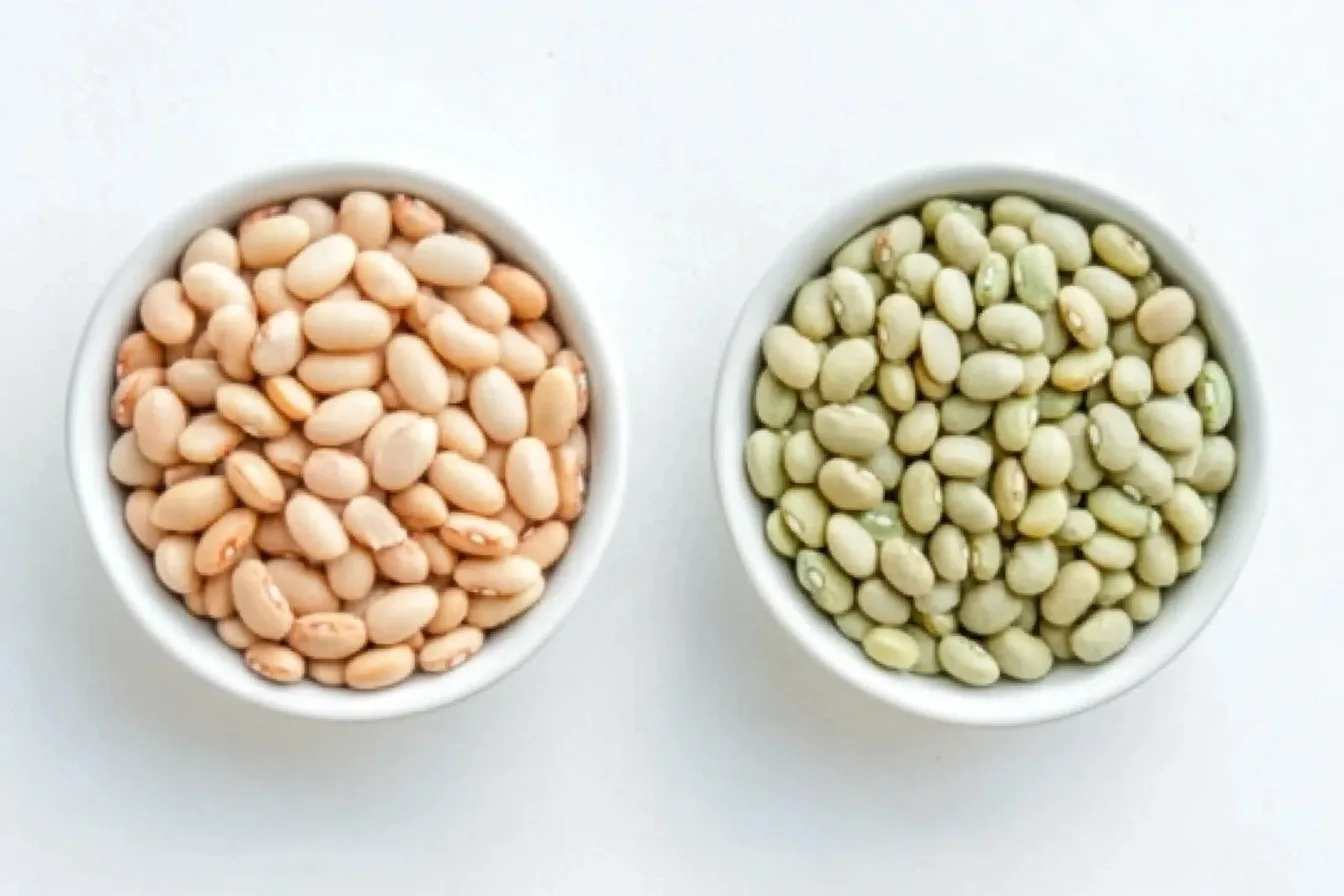Pinto beans and Romano beans, while both beloved staples in many cuisines, are often confused by those new to cooking or unfamiliar with legumes. Though both varieties of beans are used in various dishes, they differ in key ways that may impact your culinary creations. In this article, we’ll explore the differences between these two types of beans, as well as highlight other varieties you may want to try, along with a range of tasty recipes. If you’re wondering whether these two beans are interchangeable, you’re in the right place!
Table of Contents
Understanding Pinto Beans
What are Pinto Beans?
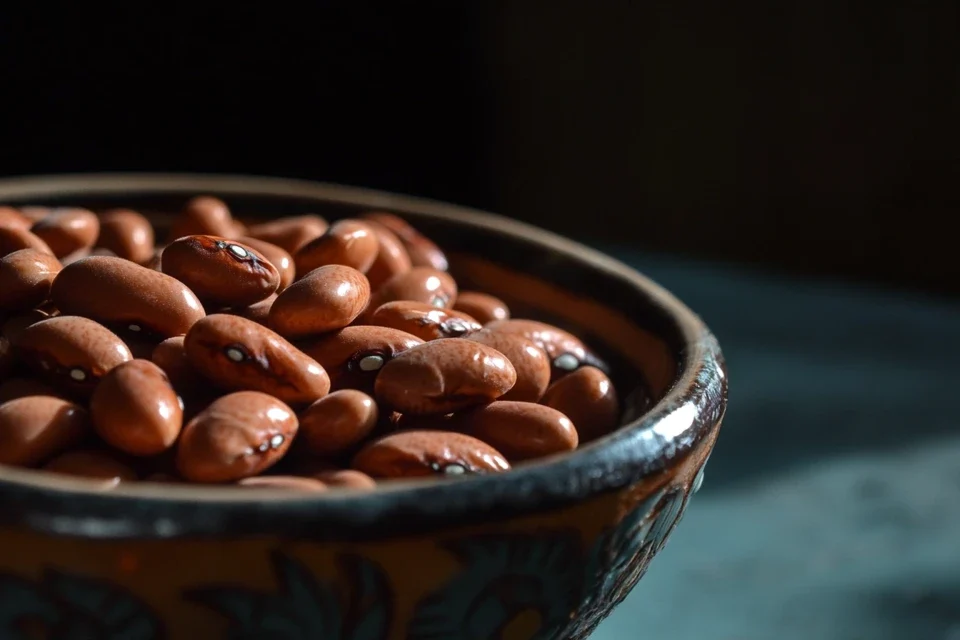
Pinto beans are one of the most common beans in the world, known for their light brown color with splashes of pink. They are a great source of protein, fiber, and essential vitamins, making them a staple in a variety of cultures, especially in Mexican and Southwestern cuisines. Pinto beans have a creamy texture when cooked and are often used in dishes like refried beans, chili, and soups.
How Pinto Beans are Used in Cooking
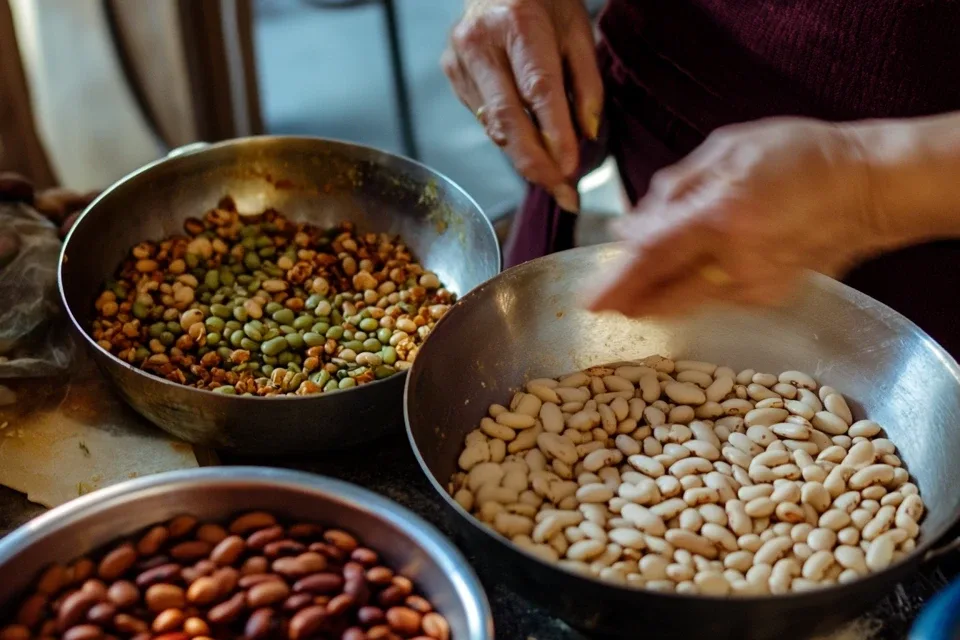
Pinto beans are incredibly versatile and can be prepared in a wide range of dishes. From bean salads to stews and casseroles, these beans are perfect for hearty meals. They are also commonly mashed to make refried beans, which are a staple in Mexican cuisine. Whether in soups or burritos, pinto beans provide a mild flavor and smooth consistency.
The Secret to Making Good Soup: Learn how to master soups with fresh ingredients and perfect seasoning.
What are Romano Beans
Characteristics of Romano Beans

Romano beans are large, flat beans known for their robust flavor and meaty texture. They typically come in a variety of colors, such as green, purple, or yellow. They are often recognized by their distinctive shape, which is wider and flatter compared to pinto beans. Romano beans are traditionally used in Mediterranean and Italian cooking, often paired with tomatoes and other flavorful ingredients.
Culinary Uses of Romano Beans
Romano beans are popular in Mediterranean and Italian dishes. They are used in bean salads, pasta dishes, soups, and stews. The beans’ tender yet firm texture allows them to hold their shape while cooking, making them ideal for braising or slow cooking. Their hearty flavor also complements a variety of sauces, especially tomato-based ones.
Key Differences Between Pinto Beans and Romano Beans
Shape, Size, and Color
Pinto beans are smaller, rounder, and have a pinkish-brown color with a speckled pattern. Romano beans, on the other hand, are much larger and flatter. Their color can vary from green to purple or yellow, and their shape is more oval. These distinct differences make them easy to tell apart, both visually and by touch.
Flavor Profiles of Pinto and Romano Beans
Pinto beans have a mild, earthy flavor, which makes them perfect for absorbing the spices and seasonings in dishes. They also have a creamy texture when cooked, which makes them a favorite in soups and stews. Romano beans, by contrast, have a stronger, slightly nutty flavor, which pairs beautifully with Mediterranean ingredients like garlic, olive oil, and tomatoes. Their texture is firmer compared to pinto beans, making them suitable for dishes that require beans to retain their shape.
Cookie Mix Cake Recipe: Try this quick and easy cake recipe that uses cookie mix as a base.
Are Pinto Beans and Romano Beans the Same Thing
Genetic and Botanical Differences
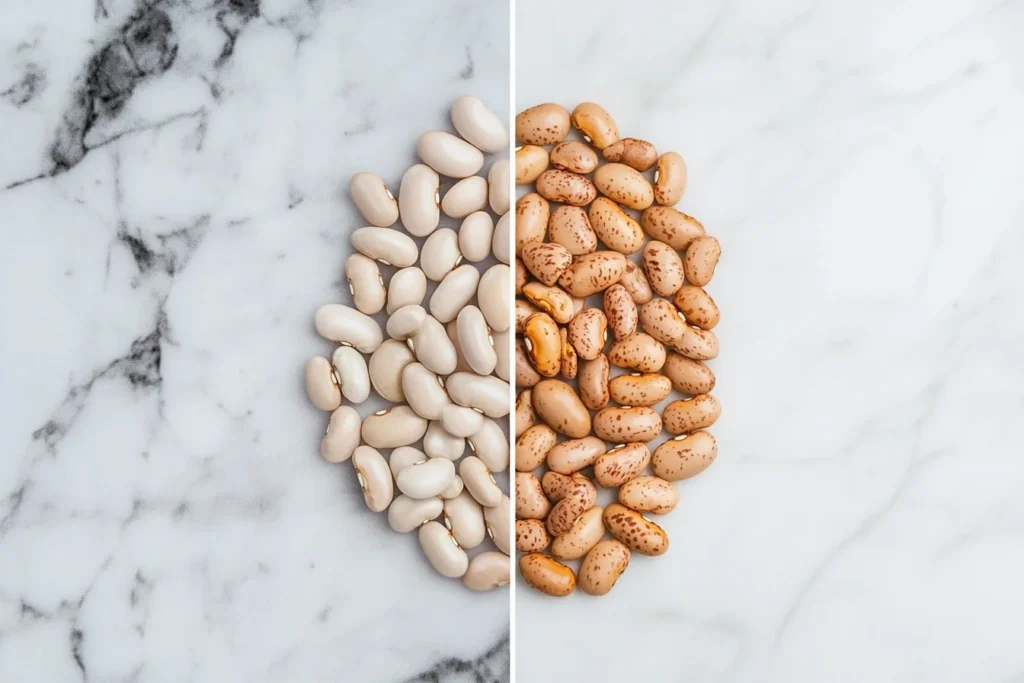
Botanically, pinto beans (Phaseolus vulgaris) and Romano beans (Phaseolus coccineus) belong to different species within the legume family. Although they are both beans, their genetic differences make them distinct. Pinto beans are more commonly grown in North America and are a part of the common bean family. Romano beans, on the other hand, have their origins in South America and are part of the runner bean family.
Culinary Perspectives on Pinto vs. Romano Beans
From a culinary standpoint, pinto beans and Romano beans serve different purposes. Pinto beans are often mashed, pureed, or used in recipes where a creamy texture is desired. Romano beans, with their larger size and firmer texture, are more commonly used in stews and braised dishes, where they can retain their shape and provide a hearty bite.
Recipe for Fish Tacos with Halibut: A light, flavorful fish taco recipe using halibut.
Other Beans Similar to Pinto Beans
Beans Closely Related to Pinto Beans
If you’re looking for beans that are similar to pinto beans, there are a few options to consider. Beans such as black beans, kidney beans, and navy beans share a similar flavor profile and texture with pinto beans. These beans work well as substitutes for pinto beans in recipes such as chili, tacos, or soups.
Which Beans Can Substitute for Pinto Beans
In recipes where pinto beans are called for, other beans like black beans, kidney beans, and white beans are great substitutes. If you’re looking for a similar texture and flavor, these beans can easily replace pinto beans without compromising the overall dish.
Beans Similar to Romano Beans
What Beans Are Close to Romano Beans in Flavor and Texture?
Beans such as cannellini beans, lima beans, and broad beans are similar to Romano beans in texture and flavor. These beans have a similar firm texture and nutty taste, making them perfect alternatives to Romano beans in Mediterranean and Italian dishes.
Substitutes for Romano Beans in Recipes
If you can’t find Romano beans, you can use other large, flat beans as a substitute. Lima beans and fava beans, in particular, are great replacements for Romano beans. Their texture and flavor are close enough to maintain the integrity of the dish.
Health Benefits of Pinto Beans vs. Romano Beans
Nutritional Differences Between Pinto Beans and Romano Beans
Both pinto beans and Romano beans are rich in protein, fiber, and essential nutrients, but there are some key differences. Pinto beans are slightly lower in calories, making them a great option for weight management. They also contain a good amount of folate and iron. Romano beans, on the other hand, have a higher amount of potassium, which is important for maintaining healthy blood pressure levels.
Which Bean is Healthier?
Both pinto beans and Romano beans offer numerous health benefits, but they serve different nutritional needs. Pinto beans are great for those looking to increase their fiber intake, while Romano beans are a better source of potassium. Depending on your dietary goals, both beans can be included in a balanced diet.
: Common Recipes Using Pinto and Romano Beans
Pinto Bean Recipes
Some of the most popular recipes using pinto beans include refried beans, chili, burritos, and bean soups. Pinto beans can be mashed, boiled, or fried to create a variety of delicious dishes that are hearty and satisfying.
Romano Bean Recipes
Romano beans are frequently used in Mediterranean and Italian cuisine. Some common recipes include pasta e fagioli, bean salads, and stews. They pair beautifully with tomatoes, garlic, and herbs, making them a versatile ingredient in many dishes.
What Do Romano Beans Taste Like: Discover the distinct taste and culinary uses of Romano beans.
FAQs
Are Romano Beans the Same as Pinto Beans?
No, Romano beans and pinto beans are not the same. While both belong to the legume family, they differ in size, shape, color, and texture. Pinto beans are smaller, rounder, and have a speckled pinkish-brown color, while Romano beans are larger, flatter, and come in colors like green, purple, or yellow. Additionally, their flavor profiles are distinct—pinto beans have a mild, creamy flavor, while Romano beans have a stronger, nuttier taste.
What is Another Name for Romano Beans?
Romano beans are often referred to as runner beans or scarlet runner beans. These beans are typically larger and flatter than other beans and are popular in Mediterranean and Italian cuisines. The term “runner bean” comes from their ability to climb trellises or other structures, making them suitable for growing in gardens.
What Bean is Closest to Pinto Beans?
Several beans are close in taste and texture to pinto beans. Black beans, kidney beans, and navy beans are some of the best substitutes for pinto beans in recipes. While these beans vary slightly in color and size, they share a similar mild, earthy flavor and can be used interchangeably in most dishes, including soups, stews, and chili.
What Beans Are Similar to Romano Beans?
Beans that are similar to Romano beans in flavor and texture include cannellini beans, lima beans, and fava beans. These beans also have a firm texture that holds up well in soups and stews, and their nutty flavor complements Mediterranean-style dishes. If you’re looking for a substitute for Romano beans, any of these beans can work well in recipes calling for Romano beans.
Conclusion
In conclusion, while Romano beans and pinto beans both belong to the legume family, they are distinct in terms of appearance, texture, and flavor. Pinto beans are smaller, rounder, and have a mild, creamy taste, making them perfect for dishes like chili and refried beans. On the other hand, Romano beans are larger, flatter, and have a stronger, nuttier flavor, making them ideal for Mediterranean-style recipes and hearty stews.
Though they are not interchangeable, there are several similar beans that can substitute for each type in various dishes. For instance, black beans or kidney beans can replace pinto beans, while cannellini beans or lima beans can be used as alternatives to Romano beans.
Understanding the differences between these beans allows for more informed choices in the kitchen, helping you select the perfect bean for your next meal. Whether you’re cooking a traditional American dish or a Mediterranean-inspired recipe, knowing the unique characteristics of each bean will elevate your cooking experience and enhance the flavors of your meals.
If you’re ever in doubt about which bean to choose, remember that while they may look similar, Romano beans and pinto beans are not the same, and each one brings its own special touch to your cooking. Happy cooking!
Print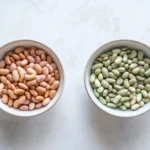
Pinto Beans vs. Romano Beans Comparison: Understanding the Differences
- Total Time: 1 hour 10 minutes (excluding soaking)
- Yield: 2 cups cooked beans per variety 1x
Description
Pinto beans and Romano beans are two popular legume varieties, each offering unique flavors and textures. In this comparison, we explore the distinct characteristics of both beans, their culinary uses, and suggest potential substitutes. Whether you’re a seasoned cook or a beginner, understanding these beans can help you make better choices for your next dish.
Ingredients
For Pinto Beans:
- 1 cup dried pinto beans (or 2 cups cooked)
- 4 cups water or vegetable broth
- Salt to taste
- 1 small onion, chopped (optional)
- 1 garlic clove, minced (optional)
- For Romano Beans:
- 1 cup dried Romano beans (or 2 cups cooked)
- 4 cups water or vegetable broth
- Salt to taste
- 1 small onion, chopped (optional)
- 1 garlic clove, minced (optional)
Instructions
Soak the Beans:
Rinse the dried beans under cold water and remove any debris.
Soak the beans in a large bowl with enough water to cover them. Let them soak for at least 4 hours or overnight for a softer texture. You can skip this step if you’re using canned beans.
Cook the Beans:
- Drain the soaked beans and transfer them to a large pot.
- Add fresh water or vegetable broth (about 4 cups) to the pot and bring it to a boil.
- Reduce the heat to low, cover, and simmer for 1–1.5 hours, or until the beans are tender.
- Add salt and optional aromatics (onion and garlic) for extra flavor.
Mash or Serve Whole:
- For Pinto Beans: Mash the cooked beans with a fork or potato masher to create a creamy texture for use in dishes like refried beans.
- For Romano Beans: Serve them whole in Mediterranean-style dishes like pasta e fagioli, soups, or salads.
Notes
Tips for Cooking:
- If you prefer a creamy texture, mash pinto beans after cooking. Romano beans, due to their firmer texture, work better in stews and dishes where beans need to hold their shape.
Substitutes:
- Pinto Beans: Substitute with black beans, kidney beans, or navy beans.
- Romano Beans: Substitute with cannellini beans, lima beans, or fava beans for a similar texture and flavor.
Serving Suggestions:
- Pinto beans are great for making refried beans, which can be used in tacos, burritos, or as a side dish.
- Romano beans are perfect in Mediterranean-inspired dishes like bean salads, stews, or pasta e fagioli.
- Prep Time: 10 minutes (if using dried beans, soaking time not included)
- Cook Time: 1–1.5 hours (depending on whether the beans are soaked)
- Category: lunch
- Cuisine: Mexican, Mediterranean
Nutrition
- Serving Size: 4 servings
- Calories: 245 calories
- Fat: 1g
- Carbohydrates: 44g
- Protein: 14g
Keywords: Romano bean recipes, How to cook pinto beans, How to cook Romano beans

